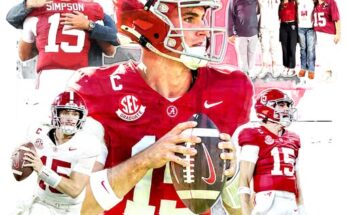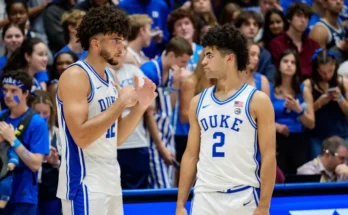The Miami Dolphins win their appeal, and the fan injury case is sent to arbitration.
The Miami Dolphins have successfully won their appeal in the fan injury case that had been circulating through the courts for the past several months. The case, which involved a fan who suffered serious injuries after being struck by a projectile during a Dolphins home game, has now been moved to arbitration after the Dolphins’ legal team presented strong arguments. This development marks a significant shift in the legal landscape surrounding sports franchises and the liability they carry when it comes to fan safety.
Background of the Incident
The incident that sparked this lawsuit occurred during a Dolphins home game at Hard Rock Stadium. The fan, whose identity remains confidential, was struck by an object—a wayward football thrown by one of the players during warmups. The fan reportedly sustained injuries that required medical attention, and the incident quickly gained media attention. While the Dolphins organization initially responded by expressing concern for the fan’s well-being, legal action was soon initiated by the injured party, claiming negligence on the part of the franchise for not ensuring the safety of fans in the stadium.
The plaintiff, a long-time Dolphins fan, argued that the injury could have been avoided if proper measures were in place to prevent such accidents. Specifically, the fan’s legal team claimed that the Dolphins were negligent in their duty to protect spectators by failing to secure the area where the warm-up activity occurred and not providing adequate warning or safety barriers.
In response, the Dolphins’ legal team maintained that such incidents were an inherent part of attending a live sporting event, where fans are often exposed to the risk of errant balls or pucks in high-intensity environments. The team further contended that the fan had assumed the risk of injury by entering the stadium, especially since signs warning about the potential for such incidents were clearly posted throughout the venue.
The Legal Battle
Following the filing of the lawsuit, the case went to court, where both sides presented their arguments. The plaintiffs’ legal team focused on the issue of negligence, claiming that the Dolphins’ failure to implement enhanced safety measures contributed to the fan’s injury. They pointed to similar incidents at other stadiums where organizations had taken proactive steps to reduce the risk of injury by introducing netting, safety barriers, and better crowd control systems.
On the other hand, the Dolphins argued that the risks associated with attending live sports events are well-documented and part of the experience. They highlighted the long-standing tradition of fans attending games in close proximity to the action and the unpredictable nature of such events. The franchise’s defense was based on the premise of “assumption of risk,” suggesting that by purchasing a ticket to the game, the fan had agreed to take on the inherent risks associated with attending a live sports event.
As the case progressed, the court initially sided with the plaintiffs, ruling that the Dolphins could potentially be held liable for the fan’s injuries, as the stadium’s safety measures might have been inadequate. This ruling prompted the Dolphins to file an appeal, seeking to have the case dismissed or, at the very least, moved to arbitration—a process that allows both sides to resolve the matter outside of the public court system, often with a neutral third party making the final decision.
The Appeal
The appeal process began when the Dolphins’ legal team filed briefs arguing that the lower court had misinterpreted the law and the facts of the case. One of the key points in the Dolphins’ appeal was that the stadium’s safety measures, including the presence of barriers in certain sections, were in line with industry standards. Furthermore, they asserted that the plaintiff’s injuries were the result of a rare and unpredictable event—one that could not have been reasonably anticipated or prevented by any means.
Additionally, the Dolphins’ legal team argued that the case should not have progressed this far in the first place, citing the concept of “assumption of risk.” They contended that the fan had voluntarily entered an environment where such incidents could occur, making it unreasonable to hold the Dolphins responsible for an accident that was beyond their control.
After presenting their case, the appeals court ruled in favor of the Dolphins, stating that there was insufficient evidence to suggest that the franchise had been grossly negligent in its handling of fan safety. The court found that the measures already in place, including warning signs and designated safety zones, were reasonable under the circumstances. As a result, the case was sent to arbitration, where the two sides will now attempt to reach a resolution outside of the traditional courtroom.
The Arbitration Process
Arbitration is a form of alternative dispute resolution in which a neutral third party, known as an arbitrator, hears both sides of the case and makes a binding decision. This process is often faster and less costly than going through a lengthy trial, and it allows the parties involved to have more control over the outcome. In this case, both the Dolphins and the plaintiff will present their arguments to the arbitrator, who will then determine whether the franchise is liable for the injury and, if so, what compensation is appropriate.
One of the key issues that will likely be addressed during arbitration is whether the Dolphins took adequate steps to ensure the safety of their fans. While the team has argued that the risks were inherent to the game, the plaintiff’s legal team will likely continue to press for a finding of negligence. The arbitrator will weigh the evidence presented by both sides, including any relevant safety protocols, the severity of the injury, and the circumstances surrounding the incident.
In addition to the legal questions, the arbitration will likely also address potential compensation for the injured fan. While the Dolphins have not publicly discussed the potential for a settlement, it is possible that the franchise will seek to reach an agreement that includes financial compensation for the fan’s medical bills, pain and suffering, and other related costs. However, given the complexity of the case, it is also possible that the matter could continue to drag on, especially if the two sides are unable to come to a mutually agreeable solution.
The Broader Implications
The Dolphins’ victory in the appeal could have broader implications for the sports industry, particularly when it comes to fan safety and liability. In recent years, there has been growing attention on the safety of fans attending live sporting events, with many teams and venues taking steps to enhance security and minimize the risk of injury. The introduction of netting at baseball stadiums, for example, has been a major focus of attention in the wake of high-profile injuries involving fans being struck by foul balls.
If the Dolphins prevail in arbitration, it could set a precedent for other sports teams and venues facing similar lawsuits. On the other hand, if the arbitrator sides with the plaintiff, it could lead to a reevaluation of safety standards at stadiums across the country, particularly in regard to the risk of flying objects and other hazards that fans might face while attending games.
Ultimately, this case serves as a reminder of the unpredictable nature of live sports events and the risks that both fans and teams must contend with. While fans may attend games to enjoy the spectacle, they must also be aware of the potential dangers that come with being in close proximity to the action. For sports teams, this case underscores the importance of implementing comprehensive safety measures to protect fans while still allowing them to enjoy the full experience of attending live games.
The Miami Dolphins’ successful appeal and the subsequent decision to send the fan injury case to arbitration mark a significant development in the ongoing conversation about fan safety in professional sports. While the outcome of the arbitration remains uncertain, the case has already shed light on the delicate balance that sports organizations must strike between protecting their fans and preserving the excitement and unpredictability of live events. Whether the Dolphins ultimately face liability or are exonerated, the case is likely to have lasting implications for how teams and stadiums address fan safety in the years to come.



